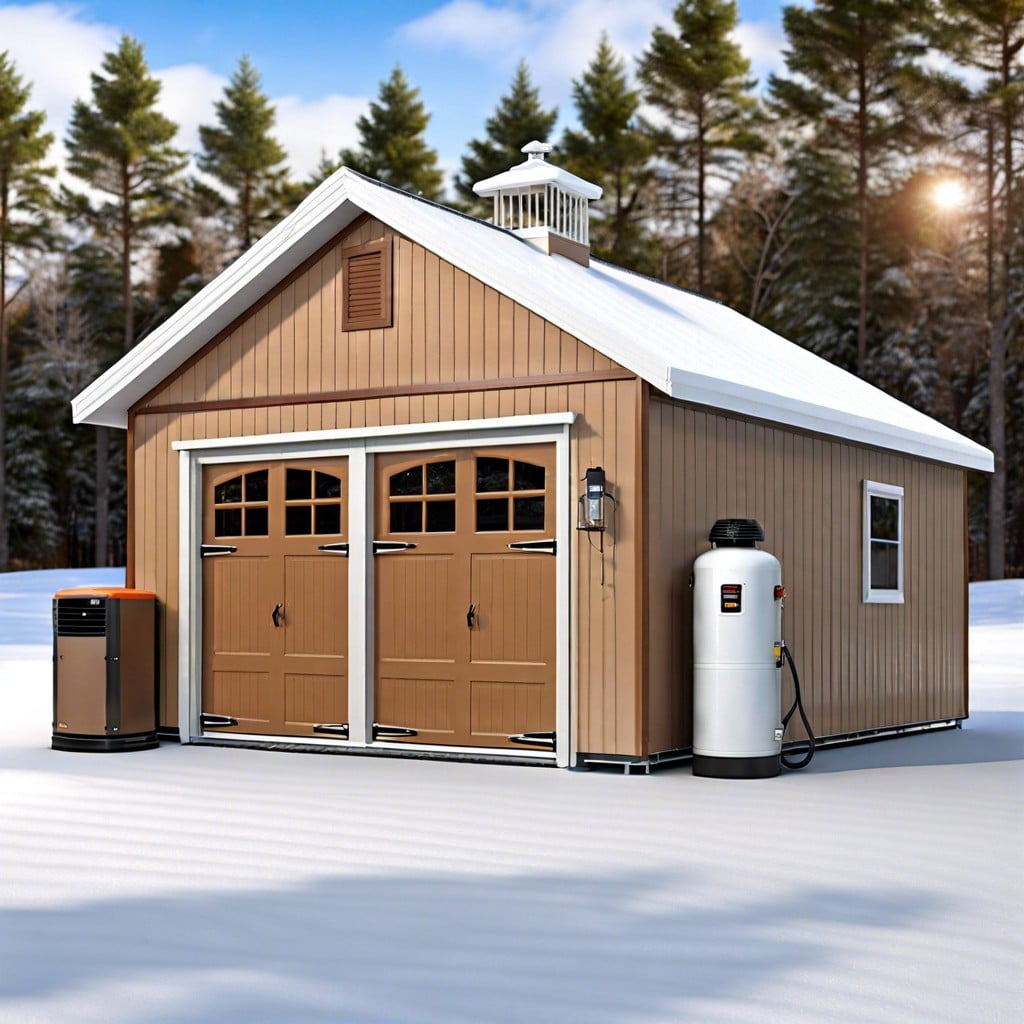Discover practical steps to effectively heat your garage for year-round comfort and functionality.
Key takeaways:
- Determine heating needs based on garage size and usage.
- Properly insulate the garage for maximum energy efficiency.
- Choose the appropriate heating method based on budget and preferences.
- Regularly maintain heating system for optimal performance and safety.
- Implement security measures to protect your heated garage from burglaries.
Determine Your Heating Needs

Assess the space size of your garage to match the heating power required. Larger areas might need more robust solutions compared to a compact space.
Consider the typical winter temperatures in your region. Areas with milder winters may do well with minimal heating, while frigid zones might require a more powerful system.
Examine how you plan to use your garage. A workspace or recreational area might need higher temperatures compared to basic storage use, affecting the type of heater you choose.
Reflect on energy efficiency. Opt for solutions that provide adequate heat without skyrocketing your utility bills.
Insulate Your Garage
Proper insulation is crucial for maintaining a comfortable temperature in your garage and maximizing the efficiency of your heating system. Here are some practical points to consider:
Start with the walls and ceiling. Fiberglass batt insulation is a cost-effective option and relatively easy to install. Ensure the insulation is sealed correctly to avoid heat leaks.
Don’t overlook the garage door. Special insulation kits are available specifically for garage doors, or you can opt for a pre-insulated door.
Seal all gaps and cracks around windows and doors with weatherstripping or caulk. This minor investment can significantly reduce heat loss.
Consider adding insulation to the floor. Epoxy coatings or interlocking rubber tiles can act as barriers against cold concrete, providing extra warmth and comfort.
By giving attention to these areas, you can create a more energy-efficient space that stays warm in winter and cooler during summer months.
Choose a Heating Method
There are several options to consider for warming your garage effectively.
Electric heaters are a popular choice due to their ease of installation and use. They come in various sizes, from portable units to wall-mounted systems, and can be precisely controlled with thermostats. However, they might increase your electricity bill significantly depending on their usage.
Natural gas heaters provide a more cost-effective solution for larger spaces. These require professional installation to connect to gas lines but offer powerful and consistent heating.
For those preferring eco-friendly options, consider installing a pellet stove. These stoves burn wood pellets, a renewable resource, and generate ample heat. Ensure proper ventilation is in place to handle the stove’s emissions.
Lastly, radiant heating is another efficient system, especially if you’re renovating your garage or building a new one. Tubes or electric panels are installed under the floor, and as they heat up, the warmth rises evenly throughout the space.
Each method has its pros and cons, so factor in your budget, garage size, and personal preferences when making a decision.
Maintenance Checklist for Heated Garages
Regular maintenance is key to keeping your garage heating system in top condition, ensuring it runs efficiently and safely. Start by inspecting the heating unit for any signs of wear or damage. Cleaning or replacing filters is crucial and should be done every few months depending on usage, as this allows the heater to operate more effectively.
It’s also wise to check the thermostat to make sure it is accurate. A malfunctioning thermostat can lead to excessive energy consumption and suboptimal temperature levels. For those using a forced-air system, examining the ductwork for leaks is essential since any escape of hot air reduces the system’s efficiency and increases heating costs.
Lastly, ensure that all heating components are free of obstructions. Keep combustible materials, like stored paint or gasoline, away from heat sources to prevent fire hazards. Regularly scheduled professional check-ups can help catch issues before they become serious problems.
Security Tips for Garages
Keep your garage secure, especially if it’s heated, as it might become a more appealing target for burglaries. First, ensure the main door has strong locks, perhaps a deadbolt or a smart lock that allows remote monitoring. Consider installing motion-sensitive lighting around the perimeter. These lights can deter intruders by illuminating them as they approach.
Another effective security measure is the use of surveillance cameras. Place cameras at all entry points. Ensure they cover the garage door and any other access doors. Modern cameras often feature remote viewing capabilities, allowing you to monitor your garage from anywhere through your smartphone.
Lastly, frequently check and maintain all entry points. Wooden doors and frames can warp or decay over time, making them easier to force open. Regularly inspect these areas and repair any damages promptly to maintain security integrity.